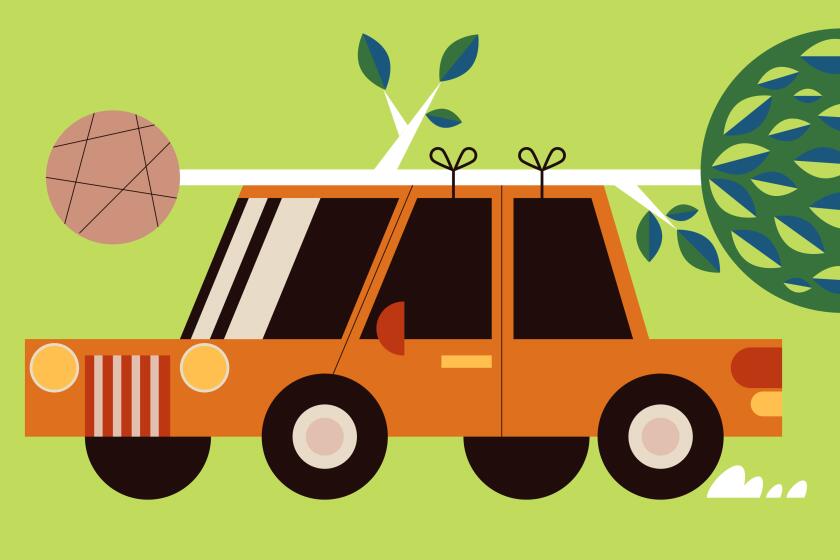Can I Create a Garden in Containers?
Question: I don’t have much space for gardening, but I have a patio. How do I go about gardening in containers?
L.M., Santa Ana
Answer: Container gardening is a wonderful way to enhance any setting, such as a patio or balcony, where there is no ground for planting.
Containers can even be an interesting addition to an actual garden itself, adding texture, color and height.
One of the advantages of container gardening is the ability to move plants around as you like.
The same basics of landscape design apply to container gardening. Consider the following when planning your garden:
Containers
There are no limits to the containers that can be used. Everything from formal urns to classic terra-cotta pots, to a child’s wagon or an old pair of shoes can be adapted to be used as a planter. There are just a few things to keep in mind when choosing the container:
* Be sure that the drainage in the container is adequate for the type of plants you will be using. Drilling drainage holes is best. If that’s not possible, add a few inches of gravel or Styrofoam packing peanuts to the bottom of the pot.
* The bigger the container, the less often you will have to water and fertilize. A 24-inch barrel may need to be watered only once or twice a week, but a 6-inch container may need to be watered daily.
* Realize that the container material will also affect how often you need to water. For instance, terra cotta is porous and will require more frequent watering than a glazed container of the same size that doesn’t breathe. Plastic needs to be watered the least often.
* Keep in mind the proportion between the container and the plant. In general, the container diameter and height should be about one-third to one-half of the height of the plant. Add vertical interest to a container in the way of trellises or decorations that are attached to a stake and inserted into the soil.
Enhancements such as miniature birdhouses or bird’s nests are also fun to add.
Plants
Almost any plant can be grown in a container as long as the container meets the plant’s specific cultural needs. When deciding on plants remember these tips:
* Annual or perennial? Annuals will give you lots of blooms and lush growth quickly, but will need to be replanted two or three times a year as the seasons change. Perennials can live for years in the same container before needing to be divided, but will only have blooms for a portion of the year.
Some perennials also die back at certain times of the year and won’t look their best. You can move the pot to an inconspicuous spot when they are dormant or combine them with other plants that stay full throughout the year.
* Pay attention to color and texture. Coordinate the colors in the container the same way you would when decorating a room. Use a variety of flower color, foliage color and texture and plants of various heights.
* Do you want fragrance? Because most container gardens are on decks and patios, they are usually close to your house and seating areas. Make sure to keep this in mind when choosing plants so that the fragrance is an enhancement and not overpowering or unpleasant.
* Consider location before choosing plants. It is important to use plants that have similar exposure requirements. Don’t plant shade-loving plants with those that require full sun.
* Try grouping similar plants for a common theme, such as all tropical plants, or all herbs.
Groups of containers look better in odd numbers such as three, five or seven pots of varying heights.
* Choose plants of varying growth habits. In addition to upright plants, include plants around the edges that spill over the brims of the containers.
Written and researched by University of California Master Gardener Sheila Peterson of Laguna Beach.
Have a problem in your yard? University of California Cooperative Extension (UCCE) Master Gardeners are here to help. These trained and certified horticultural volunteers are dedicated to extending research-based, scientifically accurate information to the public about home horticulture and pest management. They are involved with a variety of outreach programs, including the UCCE Master Garden hotline, which provides answers to specific questions. You can reach the hotline at (714) 708-1646 or send e-mail to [email protected]. Calls and e-mail are picked up daily and are generally returned within two to three days.






